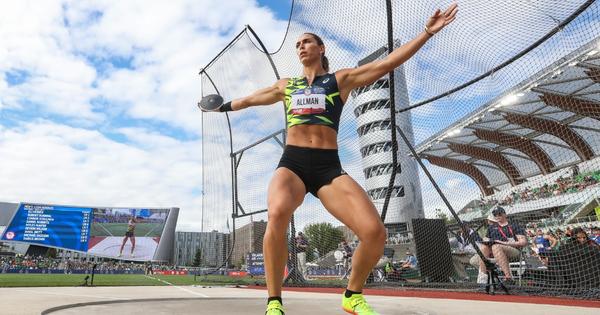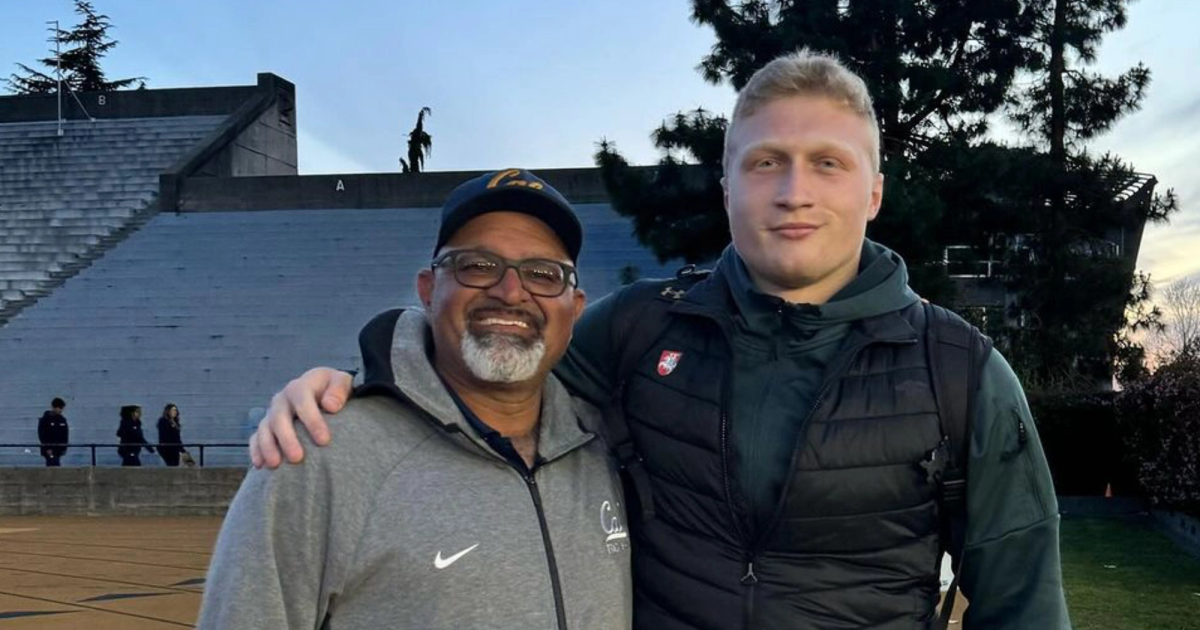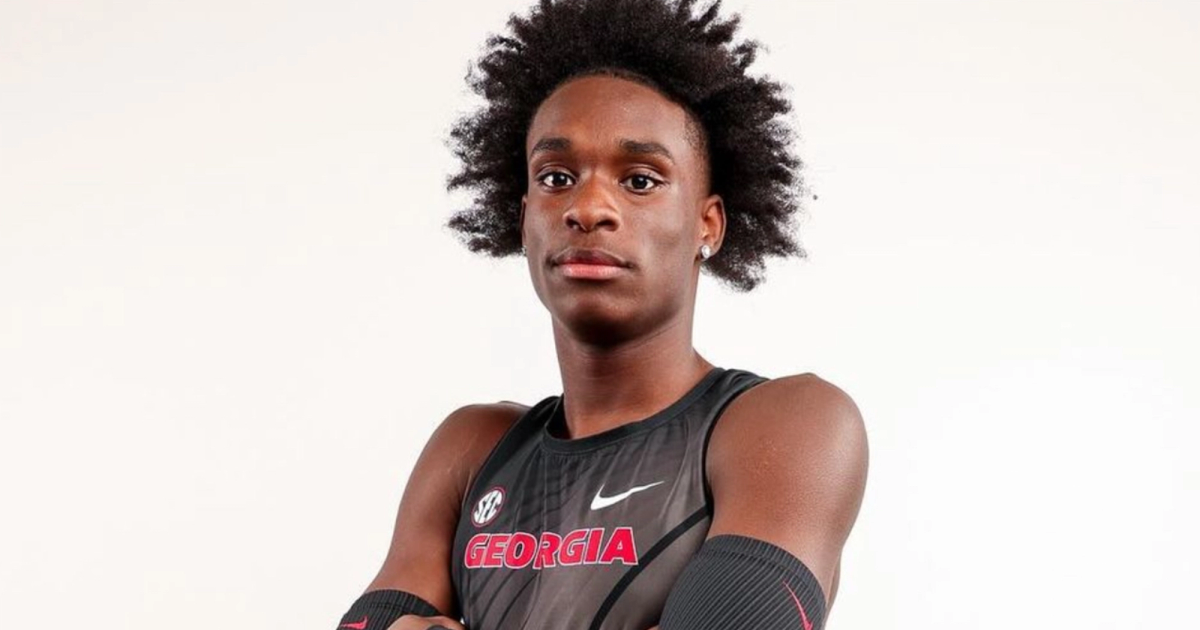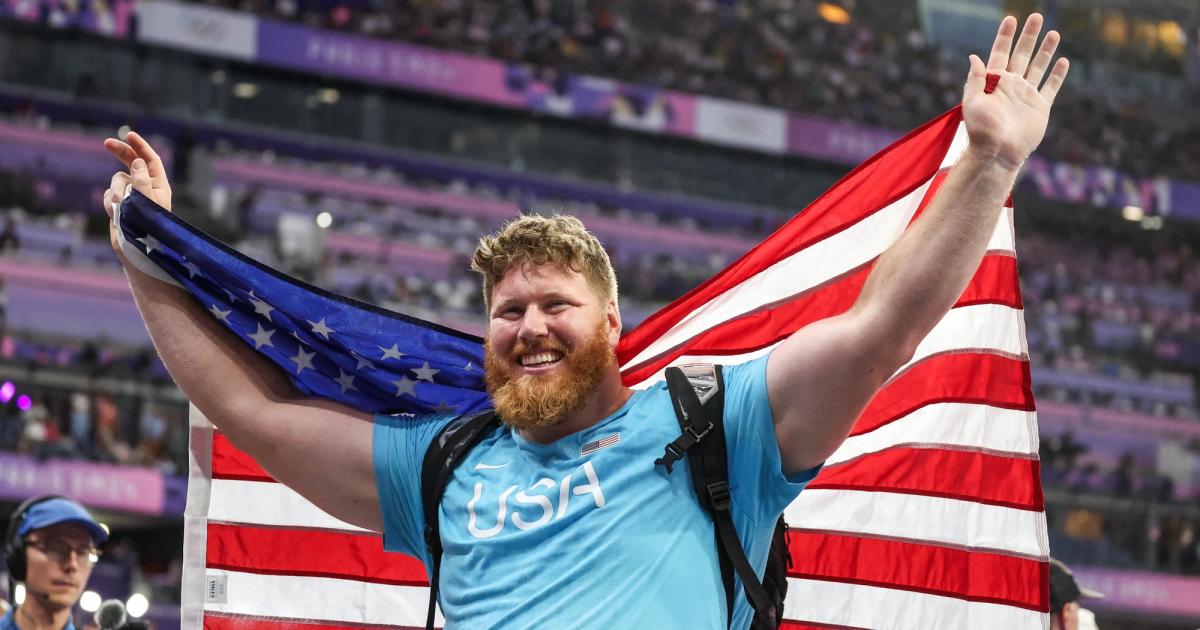By Paul Hof-Mahoney
April 9, 2025
The second weekend of April has become somewhat of a holy occasion for throws fans over the past two years thanks to the introduction of the Ramona World Invitational. Last year, dozens of the best discus throwers in the world flocked to the tiny town in Oklahoma to take advantage of the high winds that have made Millican Field the throwing equivalent of Hayward, BU, or Valencia for readers that need a running-to-throwing conversion. In Ramona’s inaugural bronze level competition, Mykolas Alekna toppled the men’s world record that had stood for 37 years and Yaimé Pérez recorded the longest throw by a woman since 1988. This year’s fields are even deeper and feature a handful of new faces to give the defending champs—and the world records—a run for their money.
Before we get into what to expect out of this weekend, we need to delve a little bit into what makes Ramona the discus-throwing haven that it is. The simple answer comes down to the fact that it’s an absolute wind factory. Common logic would say that discus throwers would want a strong wind at their back, propelling the discus forward, but the inverse is true. With the angle that a disc flies, a tailwind pushes it to the ground, while a headwind catches the disc from underneath and lifts it. There are also finer details about specific angles of the wind and the impact that it has on righty versus lefty throwers. But the general idea is “headwind equals big throws,” and Millican Field has rings set up in every direction to make sure those big Oklahoman winds can always be caught.
Going out into the middle of a field somewhere and chasing good wind is a tale as old as time for elite discus throwers, but owners Caleb Seal and Don Millican have created a place where it feels more standardized, and potentially more impactful. They host competitions basically every weekend throughout the spring and early summer, they pay athletes immediately, and in doing so, they make a tiny town in Oklahoma an environment that throwers want to come to. In an interview with CITIUS MAG in July, Team USA Olympian Joe Brown said, “I just like going there because it’s throws only, they care about the throws, they treat us right, they accommodate to the athletes, and they have a million meets throughout the whole season. It’s pretty cheap to get there, pretty cheap to stay over there, and they’re just nice people.”
Now, let’s get to the good stuff (which is still mainly discus, but not necessarily just discus). Here are the top battles and and storylines to watch throughout the weekend:
Women’s discus (Saturday afternoon)
The world leader from 2024, the defending Olympic champion, and the defending World champion are all converging in Ramona this weekend. Let’s go.
We’ll start with Pérez, the most notable returner from last year’s competition. Since defecting from Cuba after the 2022 World Championships in Eugene, she’s continued to be one of the best throwers in the world. She just hasn’t gotten the chance to show it on the world stage. Pérez made an emphatic statement when she stepped in the ring last April and launched the discus 73.09m, becoming the first woman in over three decades to enter the Top 10 all-time. She’s yet to open in 2025, but her lone competition in 2024 prior to hitting her historic mark was 61.87m, so it’s not necessarily that she’s missing a major data point she had on her side last year. She won last year’s meet by nearly six meters, but no matter how far she throws, it’s highly unlikely that will be the case this year.
Valarie Allman coming to this meet is a fact that should make every track and field fan in the world jump with joy. Allman has been the best discus thrower of the 2020s and has consistently shown the ability to hit huge marks inside stadiums. Her PB of 71.46m—the American record—is over two meters ahead of where Pérez’s was before this meet last year, so the potential for what she might be able to produce is sky-high. Allman has competed twice in 2025, throwing a world-leading 66.72m at Texas Relays two weeks ago, and then going 63.61m in her Ramona debut two days later in what was essentially a public practice session.
Allman and Pérez have met 23 times in their careers, with Pérez holding the slightest of leads, 12-11, but Allman hasn’t lost to her since September 2021. It would take a nearly perfect throw from either of these women to approach Gabrielle Reinsch’s world record of 76.80m, which nobody has ever come within two meters of, but is it insane to suggest that’s not completely out of the picture on Saturday? The optimist in me says they’ll have to break out the steel tape.
If there’s a wild card in this field, it’s 100% Lagi Tausaga-Collins. She had a picture-perfect 2023 en route to a World title in Budapest, but foul issues plagued her Olympic year, ultimately sending her home from Trials without a legal mark on the board. This offseason brought changes for her, as she returned to her old coach Eric Werksey, who she worked with while at Iowa and who is now the throws coach at Florida. Early returns looked solid but not spectacular for her last week at Florida Relays, her first competition since Trials, where she opened at 62.85m, her only legal mark of the afternoon. Whether she’ll be able to fully return to her World champ form is yet to be seen, but it’s worth noting her PB of 69.49m is also ahead of Pérez’s pre-Ramona PB.
The best way to break down the rest of the field is into two main groups. The first of these is a cohort of collegians who could be on a record-breaking trajectory. Grand Valley St.’s Erika Beistle, Louisville’s Jayden Ulrich, and Florida’s Alida van Daalen occupy positions four through six on the all-time collegiate list, with van Daalen’s 66.31m PB from a trip to Ramona last year sandwiched between Beistle’s 66.63m from Saturday and Ulrich’s 66.14m from March 22nd. A shoulder injury that van Daalen has been nursing throughout the winter and early spring means she’s not at 100%, but she still managed 63.36m in her season opener. This is a situation similar to the battle between Allman and Pérez, where it’s not entirely out of the realm of possibility for any of these women to surpass Jorinde Van Klinken’s collegiate record of 70.22m. But it would probably take a flawless moment.
The second group is a handful of women who should be competing for the remaining two spots on Team USA for Tokyo given that Tausaga-Collins has a bye and Allman is as much of a lock as Ryan Crouser throwing 22m. Veronica Fraley, now in her first season as a pro after wrapping up her collegiate career at Vanderbilt, has made each of the last three national teams and was runner-up to Pérez at this meet last year with her PB of 67.17m. Rachel Dincoff repped the red, white and blue in Tokyo and Eugene, but an Achilles tear in March 2023 and three successive surgeries have kept her out of competition entirely for the past two years. She comes in with a PB of 65.46m, which she threw in Ramona in June 2022 (which means she was here before it was cool). Fresh off a PB of 63.85m, Micaela Hazlewood could at long last be on the edge of a breakout season. The closest she’s come to a U.S. team was a runner-up finish at the Trials in 2021, but she didn’t have the standard or ranking points to head to Tokyo. The 64.50m standard could be in range for her this weekend, making her the fourth American with the standard early on in this window, and at the very least she should pick up some good ranking points. It should also be noted that both Ulrich and Beistle are American, with Ulrich making the national team for Paris alongside Allman and Fraley.
Finally, it would be a crime not to give a shoutout to Mélina Robert-Michon, the seven-time Olympian who has thrown at least 60m in now 23 of the last 26 years. The legendary Frenchwoman made her Ramona debut last week at 60.66m.
Men’s discus (Sunday afternoon)
This men’s field has to be the best ever assembled outside of an Olympics or World Championships. Five men enter with PBs in excess of 70m, 12 over 68m, and 20 over 65m. This is gonna be fun.
Matty Denny got the ring warmed up last weekend when he threw 72.07m in his first competition in Ramona, becoming only the fifth man to ever break 72m. It served as the next step in his continual growth, as he’s now PBed every year since 2019, and he could still very well improve again this weekend. Like Pérez last year, Denny won last week’s competition by nearly six meters and will be pushed to his absolute limits this time out if he wants to topple the world record holder.
Alekna’s performance here nearly one year ago to the day is a huge reason why so many new faces are showing up to Oklahoma this weekend (world records are good marketing), as he capped the greatest series the world has ever seen with the greatest throw the world has ever seen at 74.35m. A week before that meet last year, he had opened with an uncertified 71.39m bomb in Berkeley, and this year his opener was the easiest 70.09m toss you ever did see. The most important development for Alekna last year was consistency, as his worst performance of 2024 was 67.48m. He’s clearly proven he can take full advantage of the conditions in Ramona, and the sky is the absolute limit for 22-year-old who’s now competing for Cal again in his redshirt-junior year.
Mauricio Ortega and Fedrick Dacres also come to Oklahoma as Ramona debutants with 70m credentials. Both are a few years removed from that kind of form, but maybe throwing into the world famous winds are just what they need for some revitalization. One athlete who certainly is in 70m form is Marcus Gustaveson, who threw 70.63m in March at the TCU Alumni Invitational. The meet was not on the World Athletics calendar so it’s absent from his athlete profile and top lists, and there also seems to be no video of what is the best throw by an American in nearly 30 years, so evidence of it only exists in social media graphics This weekend’s meet is definitely on the calendar and there will definitely be cameras around, so it’ll be interesting to see if he can replicate some of that success in the limelight.
Between Gustaveson, 2024 Olympians Sam Mattis and Joe Brown, 2021 Olympian Reggie Jagers, and Trials finalist Dallin Shurts, there’s a halfway-decent chance that every American representative at this September’s Tokyo World Champs will be competing this weekend. Brown, Jagers and Shurts all set PBs in Ramona last year, and Mattis, who has made every U.S. team since Doha despite dealing with a testicular cancer diagnosis in 2022, just opened his 2025 campaign with a PB of 68.74m at the Triton Invitational in San Diego.
This weekend could also serve as an advance preview of both German and British championships. The German side will see Olympic sixth-placer Clemens Prüfer, world junior record holder Mika Sosna, and 2023 national champion Henrik Janssen going head-to-head-to-head, while British rivals Nick Percy and Lawrence Okoye, the two best in their nation’s history, will be duking it out for the 31st time in their careers.
Alekna is obviously the collegiate headliner in the field, but Oklahoma’s Ralford Mullings hit 69.67m here last April while red-shirting and opened his 2025 season with 69.13m toss at Texas Relays, the best mark ever by a collegian not named Alekna. There’s a handful of other top collegiate talent that may finish a bit down the results page given the depth of the field, but don’t overlook Kansas’s Dimitrios Pavlidis or Virginia Tech’s Vlad Puchko, both already 63m throwers this season.
One big change between this year’s meet and last year’s is that the non-discus events are more fleshed out in 2025. The most exciting field is probably the men’s hammer on Friday, which features two-time U.S. champ Daniel Haugh, 78m-man Alex Young, and 2024 Trials bronze medallist Justin Stafford. Also in the mix is Minnesota’s Greek duo of Kostas Zaltos and Angelos Mantzouranis, who became the first teammates in NCAA history to ever break 77m in the same competition last weekend at Florida Relays. The women’s field isn’t too shabby either, with seven entrants over 71m, led by Rachel Richeson (neé Tanczos).
The wind doesn’t have as big of an impact on the flight of the hammer, but according to UCLA throws coach Sean Denard (courtesy of Audrey Allen) a tailwind can help hammer throwers get across the ring faster, leading to more force being put into the implement at release. In the air, there’s little that wind can do to affect a 16-pound ball moving that fast.
_________
CITIUS MAG will have boots on the ground in Ramona, so follow along all weekend for coverage. All four days of the meet, including the elite discus competitions on Saturday and Sunday, will be streamed for free on the Throws University YouTube channel.

Paul Hof-Mahoney
Paul is currently a student at the University of Florida (Go Gators) and is incredibly excited to be making his way into the track and field scene. He loves getting the opportunity to showcase the fascinating storylines that build up year-over-year across all events (but especially the throws).




